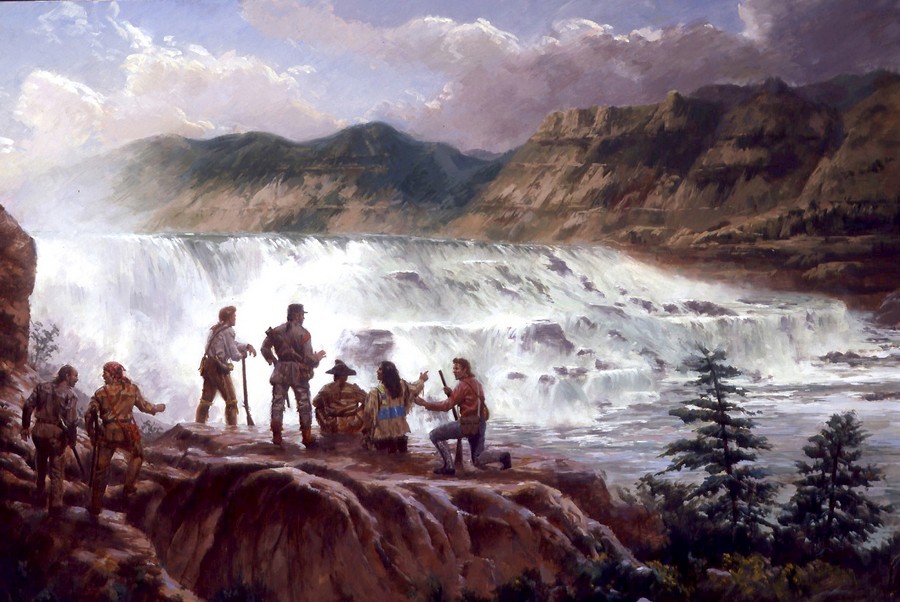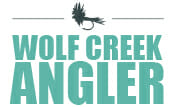
On June 13, 1805, Lewis and a small advance party witnessed “the grandest sight” (DeVoto 1997, 137) when they became the first white men to see the Great Falls of the Missouri River.
The Great Falls Portage presented Lewis and Clark with one of the most challenging ordeals of the expedition. On June 13, 1805, Lewis and a small advance party witnessed “the grandest sight” (DeVoto 1997, 137) when they became the first white men to see the Great Falls of the Missouri River. Lewis commented that “from the reflection of the sun on the sprey or mist which arrises from these falls is a beautifull rainbow produced which adds not little to the beauty of this majestically grand senery” (138). Despite their splendor the Great Falls presented much danger and hardship for the explorers. In one afternoon Lewis’s path converged with a bear, a mountain cat or wolverine and three buffalo bulls; to Lewis it seemed that “all the beasts of the neighbourhood had made a league to distroy me, or that some fortune was disposed to amuse herself at my expence” (140). Many members of the expedition were ill, including Sacagawea who had been suffering for more than a week from an unknown sickness. Clark, Charbonneau, Sacagawea and her baby nearly drowned in a violent storm of torrential rain and huge hailstones. Grizzly bears, rattlesnakes and mosquitoes were a constant worry, even to the dog, Seaman, who Clark noted was “in a constant state of alarm with these bear and keeps barking all night” (151). Finally, all equipment and supplies, including canoes, had to be carried by hand or in makeshift wagons overland for approximately 18 miles in order to bypass the 21-mile stretch of falls and rapids. Progress was very slow–the crude wagons required constant repair as the men dragged them across the rough terrain, the heat was intense, and the prickly pear cactus tore through the men’s moccasins. In his journal Lewis described his men’s condition:
. . . They are obliged to halt and rest frequently for a few minute. At every halt these poor fellow tumble down and are so much fortiegued that many of them are asleep in an instant. In short their fatiegues are incredible; some are limping from the soreness of their feet, others faint and unable to stand for a few minutes, with heat and fatiegue, yet no one complains. All go with cheerfulness . . . (Jones 2000, 69)
Further misfortune followed when Lewis’s “Experiment,” an iron-framed boat manufactured in Harper’s Ferry, West Virginia and carried from Pittsburgh, failed to work. Consequently, 10 men under Clark’s supervision spent five days creating two dugout canoes out of huge cottonwood trees. Nevertheless, the Great Falls area did provide plentiful game, allowing the explorers to stock up on food and leather clothing and to merrily celebrate Independence Day:
. . . This evening, we gave the men a drink of sperits, it being the last of our stock, and some of them appeared a little sensible of it’s effects. The fiddle was plyed and they danced very merrily until 9 in the evening when a heavy shower of rain put and end to that part of the amusement tho’ they continued their mirth with songs and festive jokes and were extreemly merry untill late at night. We had a very comfortable dinner, of bacon, beans, suit dumplings & buffaloe beef &c. In short we had no just cause to covet the sumptuous feasts of our countrymen on this day . . . (Jones 2000, 72)
Finally on July 15, after a month of portaging around the Great Falls, the explorers set out upstream, eager to locate the Shoshone Indians. Only a short time remained to cross the Rocky Mountains before winter and there were many great obstacles ahead.

Leave A Comment